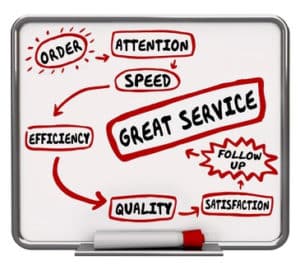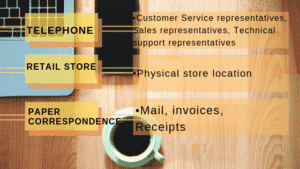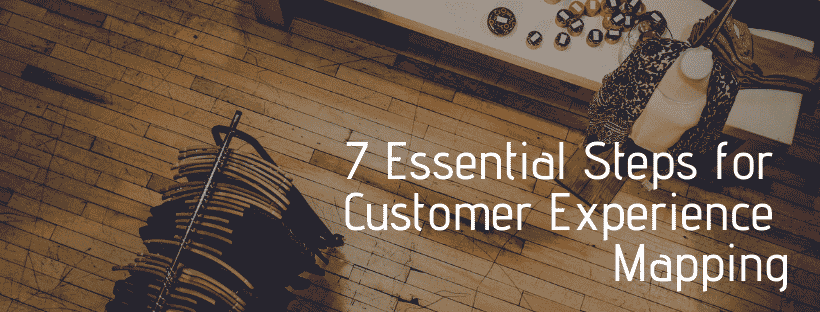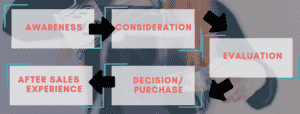When customers visit your website, call your store or drop in, what kind of experience do they have? When they purchase your products or services, what type of support, information or follow-up do they receive?
And, if they run into a problem with your product or service provided, how do you extended help to them?
Does their overall experience of your company leave them longing for more or regretting their choice to do business with you? If it is the latter, then this will absolutely be harming your bottom line profitability.
This is where Customer Experience Mapping proves to be a business saver. This process will give you insights such as: will a customer who connects with your business at a specific point after their purchase, be more likely to flip. Or, whether a customer has greater loyalty when they take a particular path to buy. Paths like interacting with the sales team, researching on social media or buying from your website.
Admittedly, this mapping process can seem overwhelming at first. That’s because its goals are to consider every channel, multiple variables, and each possible path a customer could take to buy.
Steps such as:
- Gathering extensive amounts of data from a multitude of sources.
- Drilling it all down to key actionable data points that clearly project the experience from a customer’s point of view.
By following the guidelines explained in this article and strategically working through the mapping process, it is very achievable.
This process falls within one of the 12 key projects of the GBM or GREAT Business Model, being the customer-centric project.
Customer Experience Mapping
Ultimately, mapping out the customer experience journey will help you, as the business owner, gain a much deeper understanding of your customer on how they deal with your brand and empower you to implement targeted initiatives. Developing a strategy around customer experience, will amplify loyalty, increase retention and multiply profits.
Your final strategy should provide you with a valuable tool and a useful dashboard that can be used to clearly illustrate opportunities for key stakeholders. These also include any challenges and shortcomings that might surface. For instance, showing how an insufficient engagement with an existing customer in the after-purchase process is resulting in customer attrition.
Goals of Customer Experience Mapping
The main goal of customer experience mapping is to add to your bottom line profitability as a result of their increased loyalty, and them spending more dollars with you. To achieve this, we need to figure out every imaginable way that a customer could possibly interact with your company. This usually includes a variety of mediums and numerous channels with individual goals of their own.
Well documented research has shown that on average, by the time a customer engages with you they have already undertaken 57% of their research, and therefore buying decision, on your product or service.
Before making a purchase, they compare your services or products against your competition. What influence have you had on them while they are doing their research?
And what about possible issues they have had with your products or services, post-purchase? Are they reaching out to your various support channels for help? These interactions are only a few of the several possible ways a customer might interact with your brand.
So where do we go looking for opportunities to improve customer experience? Here are some options:
- Designing initiatives intended to increase customer satisfaction.
- Pinpointing opportunities to foster brand loyalty.
- Identifying experiences and touch points in-context that contribute to customer attrition.
- Exposing circumstances to improve customer retention.
- Awareness of where the customer or user experience is already well-supported.
- Singling out chances for innovation or creating a competitive advantage.
Do you need help with experience mapping? Want Would you like Sean Foster to facilitate your mapping workshop?
7 Experience Map Prerequisites
The following are the major prerequisites for mapping customer service:
-
Secure a complete inventory of all Contact Points and channels.
Use these contact points to map out the goals of your customer. Make sure to list out the point of each interaction.



-
Classify Channels by phase.
A typical buyer’s journey goes through a number of phases. The diagram below represents a typical journey, but as your business may be unique, it is important that you map out the journey that your customers take.
Customer’s buying Journey:
-
Recognize the business reason for the utilizing each Channel.
A single channel can facilitate multiple contact points. Each one serving individual purposes at various phases of the consumer’s buying journey. The purposes of each contact point should be clearly noted.
For instance, social media can be used as a marketing channel that supports building brand awareness as well. In this scenario, utilizing Facebook and Twitter to also support the customer.
-
Establish ownership of each touch point
Although it’s easier to hand over ownership of your social media channels to the marketing team, it’s not advisable to do this entirely. For instance, your front line staff, who are dealing directly with your customers, usually have a far greater connection with your customers and are usually more effective in engaging with them on social media platforms.
Needless to say, it is critical to establish ownership by at every contact point. Appoint the team or individual responsible for managing the experience in each of these contact points.
-
Mine your Statistics.
An effective method to gain customer feedback is to mine the statistics that you may already have in place, such as:
- Web analytics
- Buyer Personas
- Blog comments
- Testimonials
- Surveys
- Forums
- One-on-one interviews
- Analytics and logs from call centers
- Product and service reviews (Amazon, Yelp, etc.)
- Social media (comments, reviews, etc.)
- Customer support communications (email, chat, etc.)
Regardless of the data mining methods or research made, the important thing is to gather enough meaningful insights. Whenever possible, supplement these insights with objective data.
-
Identify the purpose of each contact point from the consumer perspective.
Define the impact of each contact point from the eyes of your customers. Does this impact align with what you are trying to achieve?
Ask yourself: “does this contact point encourage up-selling, cross-selling or even repeat purchases or does it strengthen or enforce customer loyalty?”
It’s important to really understand the purposes of these contact points based on the customer’s point of view.
-
Quantify the effectiveness of each contact point.
Identify the customer’s expectations that you are targeting at each contact point and ensure that a plan is in place to meet those expectations. Unmet hopes will weaken the entire experience. Therefore, it is vital to understand exactly how your customers feel after each interaction.

For example, if your goal is to make them feel a sense of urgency to make a buying decision, yet your data show the opposite of that, then you have some work to do.
Summing it up
To follow these steps effectively, it’s best to enlist the help of the entire staff, even those without a direct interface with your customers. You want to ensure no stone was left unturned, all perspectives are represented, as well as every possible angle is addressed.
After all, the point of a customer experience map is to get a holistic view. And, every individual within your business is a key player on the customer’s experiences, no matter how indirect or direct they may be.
Did you find This Article Useful?
You can learn more business strategy skills, like this, by joining BIG.
Join BIG Today


Recent Comments